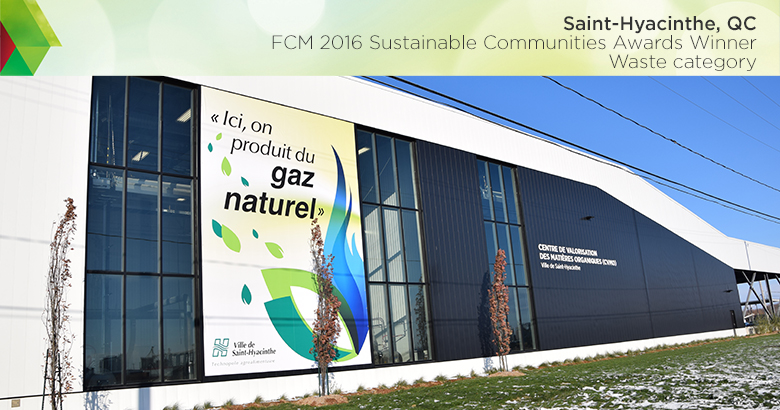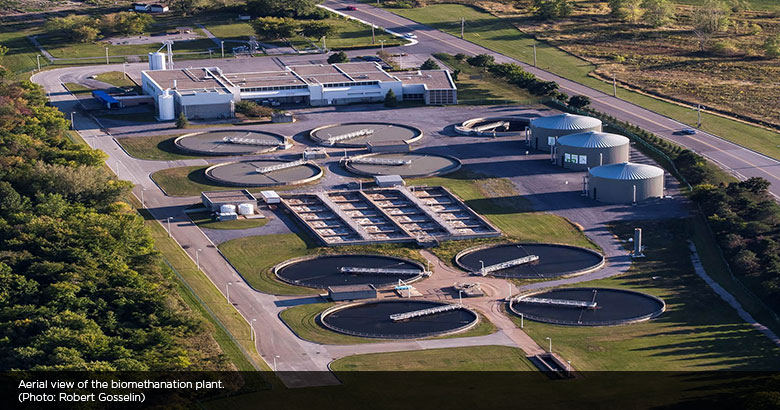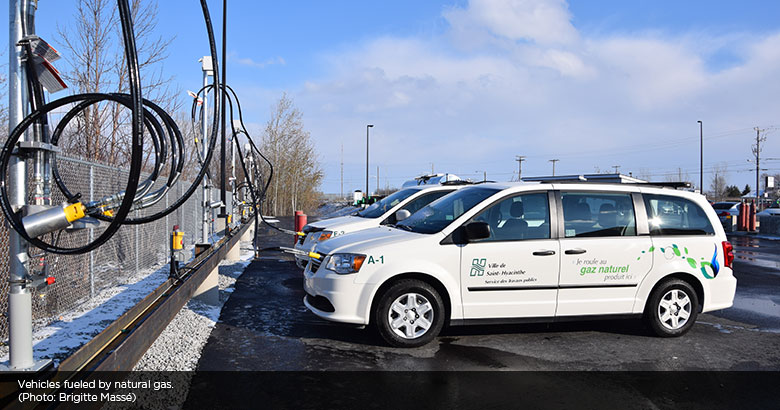A pioneering project in biomethanation
The City of Saint-Hyacinthe took the lead in completing all the research and development for its biomethanation project to produce biogas from waste. The project, completed without external consultants, is a first in Quebec and one of the first in North America.
Read the case study below to learn about project highlights, as well as the challenges and lessons learned that can help your community in planning a similar project.

About the project
| Municipal population | Project duration | Total project value |
|---|---|---|
| 54,627 | 2009–2017 | $48 million |
To manage its organic waste and sewage sludge from water treatment locally, Saint-Hyacinthe undertook a biomethanation project. By constructing a new facility and working with local partners, the city now converts waste from the brown bins of citizens in 23 municipalities and from agri-food businesses into natural gas that can be used to heat buildings and operate vehicle fleets at low cost.
Biomethanation is a stable, environmentally responsible and economic way of generating natural gas. In addition, the municipality produces a surplus of natural gas that it sells to the Gaz Métro utility. In just a few years, Saint-Hyacinthe will recoup the cost of building its organic waste and biomethanation plants.
With this initiative, Saint-Hyacinthe has proven that a municipality can lead and complete all stages of a large-scale biomethanation project, acquire the necessary technical skills, and even make the project profitable.
|


Project highlights
Results
| Environmental | Economic | Social |
|---|---|---|
|
|
|
Challenges
- Saint-Hyacinthe began its project before Quebec's biomethanation standards were developed. The municipality had to develop benchmarks in conjunction with the Quebec government. This facilitated the development of standards for future similar projects in Quebec.
- Biomethanation technology was not readily available in Canada, so Saint-Hyacinthe conducted in-depth research in Europe, and transferred the knowledge and acquired equipment from the United States and Europe.
Lessons learned
- Be inspired — Saint-Hyacinthe's experience shows that municipalities can complete large projects at an affordable cost.
- Use internal resources to significantly reduce total project costs. This approach means that project schedules and funds invested can be carefully monitored, allowing better control over expenditures and deadlines.
- Get started with biomethanation projects by visiting other facilities, seeking support from local and regional stakeholders and maintaining regular contact with authorities and citizens.
| Partners and collaborators | Project planning documents |
|---|---|
More information
Brigitte Massé
Director of communications
City of Saint-Hyacinthe
T. 450-778-8300
Want to explore all GMF-funded projects? Check out the Projects Database for a complete overview of funded projects and get inspired by municipalities of all sizes, across Canada.

